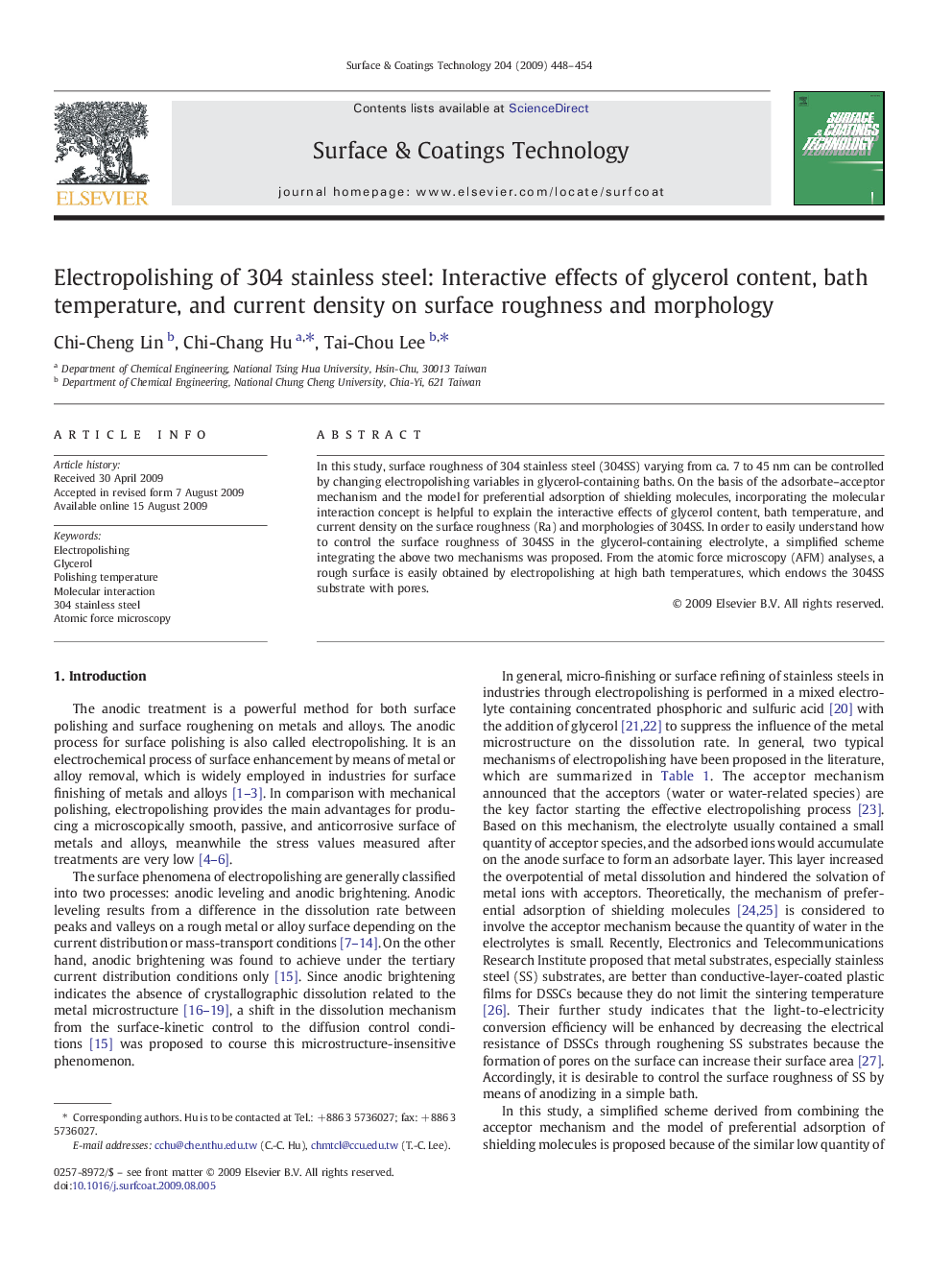| Article ID | Journal | Published Year | Pages | File Type |
|---|---|---|---|---|
| 1660553 | Surface and Coatings Technology | 2009 | 7 Pages |
Abstract
In this study, surface roughness of 304 stainless steel (304SS) varying from ca. 7 to 45Â nm can be controlled by changing electropolishing variables in glycerol-containing baths. On the basis of the adsorbate-acceptor mechanism and the model for preferential adsorption of shielding molecules, incorporating the molecular interaction concept is helpful to explain the interactive effects of glycerol content, bath temperature, and current density on the surface roughness (Ra) and morphologies of 304SS. In order to easily understand how to control the surface roughness of 304SS in the glycerol-containing electrolyte, a simplified scheme integrating the above two mechanisms was proposed. From the atomic force microscopy (AFM) analyses, a rough surface is easily obtained by electropolishing at high bath temperatures, which endows the 304SS substrate with pores.
Related Topics
Physical Sciences and Engineering
Materials Science
Nanotechnology
Authors
Chi-Cheng Lin, Chi-Chang Hu, Tai-Chou Lee,
